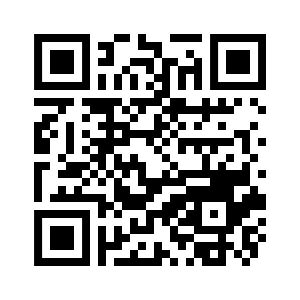Strategi Pengembangan Bisnis Usaha Mikro Kecil Menengah Keripik Pisang Dengan Pendekatan Business Model Kanvas
Studi Kasus UMKM Arabar Shop di Kota Bandar Lampung, Provinsi Lampung
DOI:
https://doi.org/10.33557/mbia.v19i3.1177Keywords:
Business Model Canvas; Banana Chips; Development Strategy.Abstract
The aim of this research is to describe the business model canvas and to create a business transformation design. The research was carried out at the MSMEs Arabar Shop Bandar Lampung, which is one of the MSMEs whose main activity is marketing Banana Chips. This research uses a descriptive method with a qualitative approach, namely explaining in depth about the situation or process being researched, namely the Arabar Shop MSMEs. The key informants in this research are the owners of MSMEs and staff. Data collection was carried out through in-depth interviews with key informants to obtain clear information about the application of the business model canvas at the Arabar Shop MSMEs. The general description of the company is explained by the position of company resources and their performance. The business transformation model is analyzed using a business model canvas approach and a customer empathy map. The result of the Arabar Shop MSMEs business transformation development strategy is to improve the preservation of customer segments and as their key resource. Increasing value propositions such as customer customization service, and social media in its value in customer channels and relationships generate a revenue stream from selling new products made of bananas and other ingredients. Increases are also needed in social activities in the main activities, increasing partners such as supplier and delivery services as the main partners, as well as additional costs for adjustments and social activities to the cost structure.
Abstrak
Tujuan penelitian ini adalah untuk mendeskripsikan Bisnis model kanvas dan menciptakan desain transformasi bisnis. Riset ini dilakukan pada UMKM Arabar Shop Bandar Lampung yang kegiatan utamanya adalah memasarkan keripik Pisang. Penelitian ini menggunakan metode deskriptif dengan pendekatan kualitatif, yakni menjelaskan dan menggambarkan secara mendalam tentang situasi atau proses objek yang diteliti yaitu UMKM Arabar Shop. Informan kunci dalam penelitian ini adalah pemilik UMKM dan staf bagian pemasaran. Pengumpulan data dilakukan melalui wawancara mendalam kepada informan penelitian sehingga diperoleh gambaran yang jelas mengenai penerapan business model canvas pada UMKM Arabar Shop. Deskripsi umum perusahaan dijelaskan melalui posisi sumber daya perusahaan dan kinerjanya. Model transformasi bisnisnya dianalisis dengan pendekatan bisnis model kanvas dan peta emphaty pelanggan. Hasil strategi pengembangan transformasi bisnis UMKM Arabar Shop adalah meningkatkan pelestarian segmen pelanggan sebagai kunci sumber daya mereka. Peningkatan proposisi nilai seperti layanan penyesuaian pelanggan, dan media sosial dalam nilainya di saluran dan hubungan pelanggan menghasilkan aliran pendapatan dari penjualan produk baru yang terbuat dari pisang dan bahan lainnya.
Kata kunci: Bisnis Model Canvas; Keripik Pisang; Strategi Pengembangan.
References
Borseman, M., Tanev, S., Weiss, M., & Rasmussen, E. S. (2016). Lost in the canvases: Managing uncertainty in lean global startups. ISPIM Innovation Forum. The International Society for Professional Innovation Management.
Carter, M., & Carter, C. (2020). The Creative Business Model Canvas. Social Enterprise Journal, 16(2). https://doi.org/10.1108/SEJ-03-2019-0018
Chittithaworn, C., Islam, A., Keawchana, T., & Yusuf, D. H. M. (2011). Factors affecting business success of small & medium enterprises (SMEs) in Thailand. Asian Social Science. https://doi.org/10.5539/ass.v7n5p180
David, F. R. (2011). Strategic Management : Concepts and Cases (S. Yagan (Ed.)). Prentice Hall.
Frick, J., & Ali, M. M. (2013). Business model canvas as tool for SME. IFIP Advances in Information and Communication Technology. https://doi.org/10.1007/978-3-642-41263-9_18
Hermanto, A., Tayibnapis, A. Z., & Setyaningrum, I. (2016). STRATEGI PENGEMBANGAN UKM BERBASIS INOVASI DI PROVINSI JAWA TIMUR: PERIODE 2010-2014. Jurnal Ekonomi Dan Bisnis, 20(2). https://doi.org/10.24123/jeb.v20i2.1599
Indriastuti, I., Affandi, M., & Indriani, Y. (2015). Strategi Pemasaran Berdasarkan Perilaku Pembelian Keripik Pisang Di Kota Metro. Jurnal Ilmu-Ilmu Agribisnis. https://doi.org/10.23960/jiia.v3i2.
JK Li, H. H., & Tan, K. H. (2004). SMEs business growth model: a medium to big effort. International Journal of Management and Enterprise Development, 1(3), 195–207. https://doi.org/10.1504/ijmed.2004.004520
Keane, S. F., Cormican, K. T., & Sheahan, J. N. (2018). Comparing how entrepreneurs and managers represent the elements of the business model canvas. Journal of Business Venturing Insights, 9. https://doi.org/10.1016/j.jbvi.2018.02.004
Kotler, P., & Armstrong, G. (2018). Kotler & Armstrong, Principles of Marketing | Pearson. In Pearson.
Ladd, T. (2018). Does the business model canvas drive venture success? Journal of Research in Marketing and Entrepreneurship. https://doi.org/10.1108/JRME-11-2016-0046
Madanchian, M., & Taherdoost, H. (2017). Role of Leadership in Small and Medium Enterprises (SMEs). International Journal of Economics and Management Systems, 2.
Marfuah, U., Nopianti, R., & Ambaria. (2019). Business development strategy with business model canvas approach at Pakdhe Mie chicken shop-Cimanggis, Depok. International Journal of Scientific and Technology Research, 8(2).
Martiman. (2014). Strategi Pemasaran Barang dan Jasa Perusahaan Melalui Media Iklan. Jurnal Ilmiah Widya.
Murray, A., & Scuotto, V. (2015). The Business Model Canvas. Symphonya. Emerging Issues in Management. https://doi.org/10.4468/2015.3.13murray.scuotto
O’Neill, T. W. (2015). The business model canvas as a platform for business information literacy instruction. Reference Services Review. https://doi.org/10.1108/RSR-02-2015-0013
Osterwalder, P. & al. (2010). Business Model Canvas: nine business model building blocks. Strategizer.
Planellas, M., & Muni, A. (2019). Business Model Canvas. In Strategic Decisions. https://doi.org/10.1017/9781108665797.026
Rukka, R. M. (2011). Buku Ajar Kewirausahaan. In Lembaga Kajian dan Pengembangan Pendidikan (LKPP) Universitas Hasanuddin.
Sholihah, N. A., & Iqbal, M. (2018). ANALISIS PERANCANGAN MODEL BISNIS DENGAN PENDEKATAN BUSINESS MODEL CANVAS (Studi pada Usaha Kecil Menengah UD. Duta Merpati). Jurnal Administrasi Bisnis, 61(4).
Sugiyono, D. (2018). Metode penelitian kuatintatif , kualitatif dan R & D / Sugiyono. In Bandung: Alfabeta.
Zimmerer, T. W., & Scarborough, N. M. (2008). Kewirausahaan dan Manajemen Usaha Kecil. In Salemba Empat.
Downloads
Published
Issue
Section
License
MBIA Universitas Bina Darma Jalan Jend. A. Yani 13 Ulu Palembang 
MBIA by http://journal.binadarma.ac.id/index.php/mbia is licensed under a Creative Commons Attribution-ShareAlike 4.0 International License.











